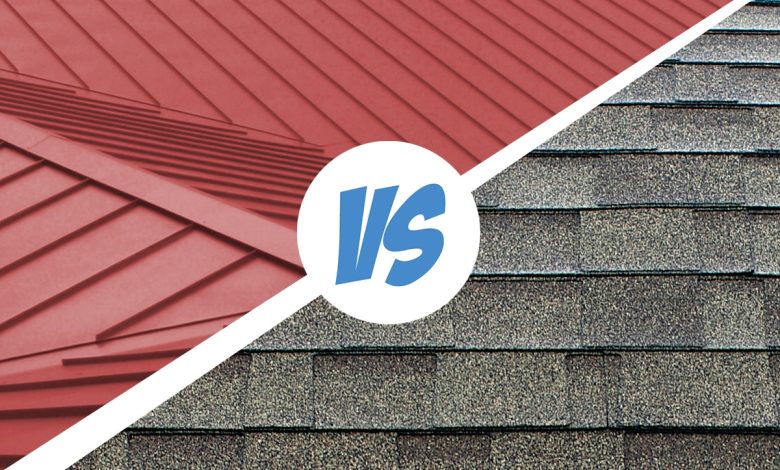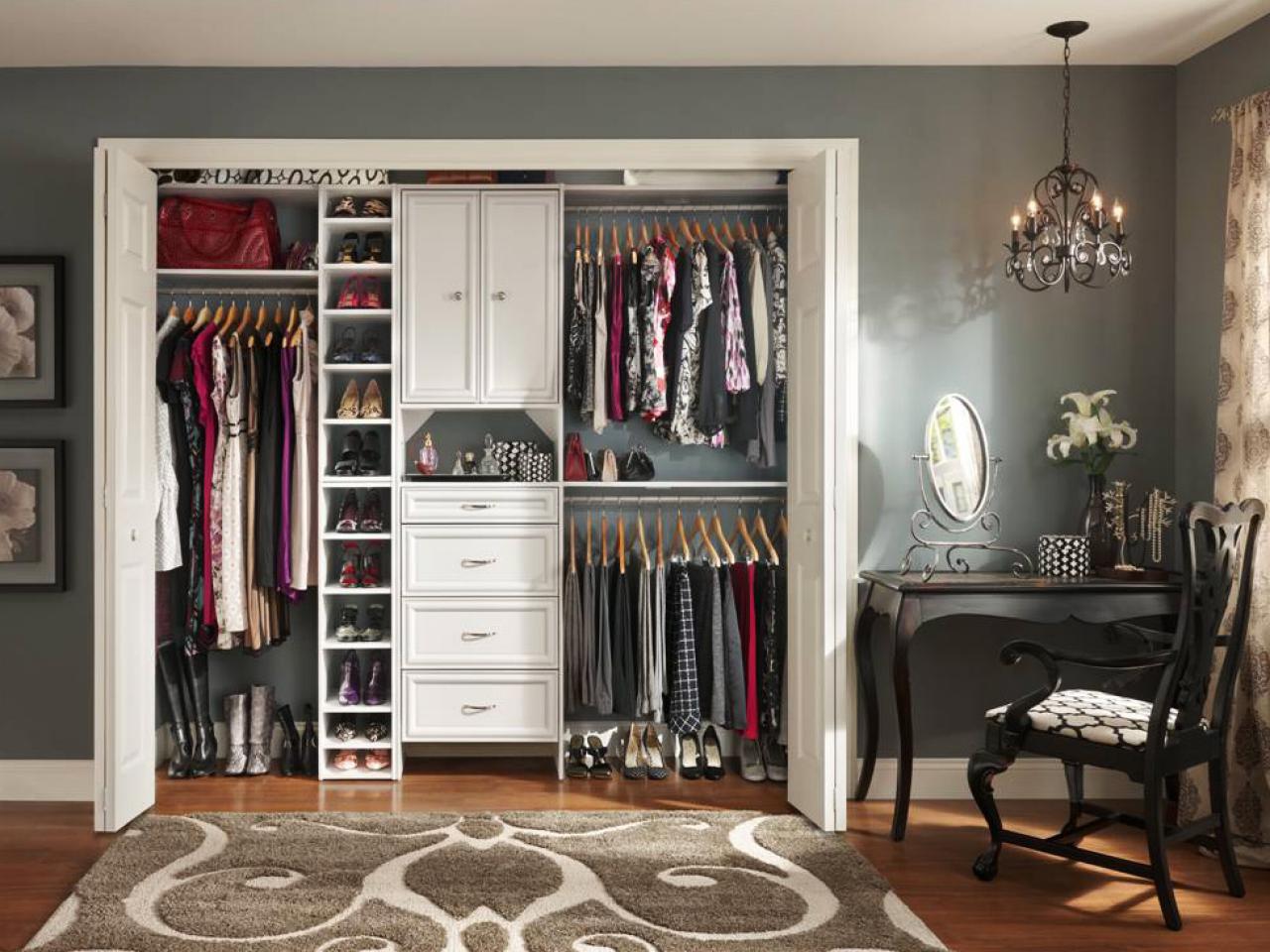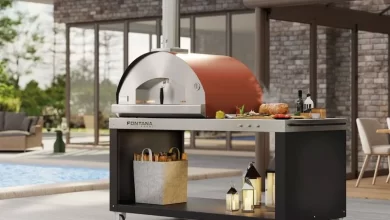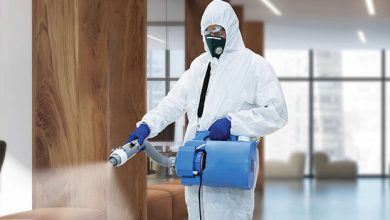Metal Roofs vs Shingle Roofs: Which is Best for Your Home?

If you’re in the market for a new roof for your home, you may be feeling a bit overwhelmed by deciding between getting a metal roof or a shingle roof. As two of the most common roofing materials, both have their advantages and disadvantages.
We’ll look at the pros and cons of both metal roofs and shingle roofs to help you decide which is best for you – because it’s not just about the aesthetic, but also the long-term performance and cost-effectiveness of each material. We’ll also look at which type of home each material is better suited for and the cost of installation and maintenance. The best advice that we can offer for installing a new roof is to hire a professional roofing company with a team of expert roofers. So, if you’re feeling torn between metal roofs and shingle roofs, read on and we’ll help you make the best decision for your home.
Quick Explanation
Metal roofs tend to be more durable and last significantly longer than traditional shingle roofs, but they can be more costly upfront. Shingle roofs are generally easier to repair, but may need to be replaced more often due to wear and tear over time.
Comparing Metal and Shingle Roofs
When choosing a roof for your home, metal and shingled roofs are among the most popular materials used. Each material has its own set of benefits and drawbacks and it’s important to evaluate each one to make sure you choose the best material to suit your needs.
Metal roofs tend to be more expensive than shingles initially but they can also last up to four times longer. Additionally, metal roofs are naturally energy efficient since they reflect sunlight back into the atmosphere, which can reduce cooling costs significantly in hot weather climates. Metal roofs also come in a variety of different styles, so there is usually an aesthetic that fits any type of home. However, metal roofs do tend to be quite noisy during rain or hail storms and can be prone to accumulating moss over time.
Shingled roofs are typically cheaper upfront compared to metal but will need more frequent replacing because they generally have a shorter lifespan. Shingles do not reflect sunlight as well, meaning that these roofs may add to summer cooling costs. On the plus side, shingle roofs can provide excellent insulation for homes that experience cold winters and require little maintenance over their lifetime. However, shingles are susceptible to high winds which could cause granules of the shingles to come off and fly away and debris or dirt can become lodged in between the shingles creating pools of standing water that can damage the roof with time.
Ultimately, both metal and shingle roofs offer different benefits depending on a homeowner’s climate and budget. In the next section, we explore materials and design considerations when comparing these two roofing options.
Roofing Materials and Design Considerations
The type of roofing material you choose for your home is a significant investment requiring close attention and deliberation. Since metal roofs and shingle roofs are two of the most commonly used materials, each has its own unique advantages and disadvantages to consider.
Metal roofing is produced from various elements such as aluminum, copper, or steel, which provides greater longevity than traditional asphalt shingles. Metal roofs are also more resistant to cracking, splitting, and other typical damage caused by severe weather events. Furthermore, some metal roof systems feature renewable energy capability that can reduce energy costs.
Shingle roofs are comparatively less expensive when making an initial investment in the material itself. Asphalt shingle roofs have a long lifespan — usually lasting 20-30 years — if properly maintained. They also provide flexibilty when it comes to design options like colors and patterns . Another bonus to shingle roofs is their lightweight nature, meaning they don’t need additional reinforcement like metal roofs do.
Overall, both types of roofing materials considered here should last several decades with regular care and attention. When making the decision between metal and shingle roofs, homeowners should consider all aspects of their particular situation along with potential future scenarios that could affect investments over the lifetime of their home’s roof.
Next, we will compare the costs associated with these two types of roofing materials in order to give homeowners a better sense of what types would fit into their budget.
Crucial Points
When choosing the type of roofing material for a home, metal and shingle roofs are two of the most common options. Metal roofing offers greater longevity and damage resistance, but is more expensive. Shingle roofs are less expensive initially, have a long lifespan when maintained properly, are lightweight and offer design flexibility. It’s important to consider cost as well as other factors in order to make the best decision for a particular situation.
Roofing Cost Comparison
When choosing between a metal roof or shingle roof for your home, one of the most important factors to consider is cost. Metal roofs generally tend to be more expensive than shingle roofs. The cost of a metal roof can range anywhere from $8,000 – $30,000 depending on the type of roof and size of the area covered. Shingle roofs are usually much cheaper with prices ranging from $7,000 – $15,000. However, shingle roofs require more frequent replacements due to their shorter lifespans. If a homeowner is interested in making an investment that will last for many years and yield more financial return, then a metal roof may be the better choice even if it comes at a higher price point initially.
In addition to installation cost differences, the energy efficiency of each roofing type should also be considered before making a decision. Metal roofs are much more reflective and can keep up to 40% of the sun’s heat from entering your home in summer months – saving tremendously on cooling costs. The same is not necessarily true for shingle roofs which tend to absorb more heat energy from the sun when compared to their metallic counterparts.
Ultimately, the initial cost comparison between these two types of roofs must factor into all decisions; however, it’s important to remember that there are long-term benefits and savings to consider as well which could outweigh any differences in initial installation price between metal and shingle roofs.
Now that we have discussed the cost comparison between metal and shingle roofs, let’s move onto the next section and examine the durability of each type of roofing material.
The Durability of Metal and Shingle Roofs
When comparing metal roofs vs shingle roofs, durability is a key factor. Depending on the material and application, both types of roof systems can offer excellent long-term protection.
Metal roofs are an increasingly popular choice due to their durability and relatively low cost over time. Metal roofs are made from galvanized steel or aluminum, offering exceptional resistance to the elements. They are lightweight and don’t need additional sealants that benefit performance in extreme weather conditions. In terms of maintenance, metal roofs require minimal care and they last up to three times as long as conventional roofs.
Shingle roofs are also known for their durability. Asphalt shingles are designed for even the most inclement weather conditions and are warrantied against breakdown due to hail, strong winds, fire, and water damage caused by ice and snowmelt. This type of roof requires very little maintenance throughout its life; however, it is important to keep shingles clean of debris and moss growth since too much between the layers can affect insulation value and increase heat transfer into your home during the hot summer months. Although asphalt shingles typically last around 20 years, lifespans can be significantly extended if they are regularly inspected and maintained.
Both metal and shingle roof systems have their advantages when it comes to durability. It is important to consider both options when selecting a roof system for your home as there are many factors that will determine which one is right for you such as longevity expectations, multifunctionality, region climate specifics, installation cost, etc..
The next section will explore the long-term protection each type of roof offers from harsh weather conditions in more detail.
Long-Term Roof Protection from Weather
Choosing the best roof for a home is an important decision, as it contributes to the structure’s long-term protection from weather. Both metal roofs and shingle roofs provide solid protection, with advantages and disadvantages that depend on homeowners’ individual needs.
Metal roofs are able to withstand all types of weather, including high winds and heavy rains. They also have superior fire resistance, making them a good option in areas prone to brush or forest fires. The longevity of metal roofs makes them an attractive choice; if properly cared for, they can last for decades. And because the material has a long lifespan and does not need to be replaced regularly, it may be more cost effective in the long run compared to materials such as asphalt shingles.
On the other hand, shingle roofs may not provide as much long-term protection from severe weather. They tend to break or warp in extreme conditions, such as during hail storms or high winds. Shingle roofs are vulnerable to damage from large falling branches and tree limbs, as well as fires. They may also become displaced following regular exposure to hail and wind gusts, further decreasing their overall lifespan. Although they may be able to withstand normal conditions without too much difficulty, they don’t always hold up well against extreme weather events.
Overall, metal roofs offer better protection from weather in the long term than their shingle counterparts. Homeowners who live in regions prone to strong storms or regular heavy snowfall should consider this an important factor when deciding which type of roofing material is best for their residence.
The next section will explore insulated versus uninsulated roofs in order to determine which provides the most benefit for homes exposed to harsh winters and hot summers alike.
- According to a study by the International Association of Certified Home Inspectors, metal roofs have a lifespan that is, on average, three times longer than shingle roofs.
- Research shows that metal roofs can reduce energy costs by up to 25% compared to asphalt shingles.
- A survey conducted by Ply Gem found that metal roofing products last an average of 40 years and require significantly less maintenance than other roofing materials such as asphalt shingles.
Insulated vs Uninsulated Roofs
When it comes to metal or shingle roofs, an important decision homeowners need to make is whether to opt for an insulated roof or an uninsulated roof. Insulated roofs generally have insulation that is installed between the rafters of a home, and are meant to improve energy efficiency while keeping a home comfortable all year round. While insulating a roof can be more expensive than going with an uninsulated option, those who invest in insulated roofs will benefit from lower heating and cooling costs over the years. Additionally, adding insulation can help increase a home’s acoustics, as it reduces noise from outside sources like rainfall.
On the other hand, uninsulated roofs have their own advantages. For instance, they are cheaper than insulated roofs and may require less maintenance. Uninsulated options also tend to be ideal for garages or sheds since they do not require the same level of insulation that a living space needs. As a result, homeowners may be able to save money and enjoy greater flexibility when going with an uninsulated roof for these structures.
Overall, there is no one-size-fits-all solution here. The decision of whether or not to get an insulated roof depends on individual factors like budget considerations, climate conditions and how the structure will be used in the long-term. For general guidance, however, insulated roofs tend to be better for homes that need to keep warm air in during winter months and cool air in during summer months.
The following section will look more closely at maintenance requirements for metal and shingle roofs.
Roof Maintenance Requirements
When deciding between metal and shingle roofs for your home, you should consider the maintenance requirements for each. Metal roofs require little maintenance. They can usually be left untouched for decades at a time. It is recommended to inspect the metal roof annually for any loose or missing screws, fasteners, and to look out for rust spots. Minor repairs may be done in less than an hour but more serious repairs may need professional help.
On the other hand, shingle roofs tend to require more maintenance over time due to their susceptibility to weather damage and pests. Inspections are recommended twice a year during both the dry and wet seasons. During the wet season, it’s important to look out for water stains or water pooling on exposed surfaces of the roof, which may indicate improper installation or damage caused by hail or falling debris. The flashing around chimneys, dormers, and walls should also be checked for signs of wear or possible failure that can lead to leaks or water infiltration into the house. During the dry season, it is important to look out for missing or cracked shingles which could be caused by age or extreme temperature changes from winter and summer months. Additionally, moss and algae should be monitored as this can cause roof decay and create pathways for water infiltration into the house. If found, take appropriate measures such as cleaning with bleach solution or applying zinc strips on ridges of roof.
Overall, metal roofs require much less maintenance than traditional shingle roofs because they don’t have as many vulnerable points that need to be inspected regularly. However, shingle roofs require more frequent inspections but with proper maintenance they will last just as long as a metal roof if not longer. Now that you have an idea of the maintenance requirements associated with metal and shingle roofs let’s explore their pros and cons in more detail in the following section.
Pros and Cons of Metal and Shingle Roofs
Metal roofing is an attractive option with several advantages, but it also has some drawbacks compared to traditional shingle roofs. To help make an informed decision, let’s explore the pros and cons of each type of roof.
Pros of Metal Roofs:
– Durable: A well-maintained metal roof can last up to 50 years or more, far longer than traditional asphalt shingle roofs. Metal roofs are also resistant to fire, mildew, rot and insects.
– Energy Efficient: The aluminum or steel material reflects heat away from the home and through natural ventilation, helps to reduce its internal temperature significantly in summer months. This can result in lower energy bills due to reduced air conditioning use.
– Lower Maintenance Costs: Metal roofs require minimal maintenance—only needing occasional washing with a garden hose—compared to shingle roofs that require frequent repairs and re-coating every five to seven years to prevent rot, water damage and other issues.
– Improved resale value: Metal roofs typically increase property value by 3-5%. While this doesn’t apply in all areas, homeowners who may sell their homes in the future will have additional selling points.
Pros of Shingle Roofs:
– Cost: Asphalt shingles are the most economical option when it comes to roof installation materials, costing much less than metal or tile options.
– Ease of Installation: Asphalt shingles are lightweight compared to metal and tile, making them easier to work with during installation. This speed and ease translates into lower labor costs for homeowners.
– Weight: Asphalt shingles are lightweight and don’t require reinforcement like heavier tiles or metals do. This can save money on any additional support structures that may be required for heavier materials.
Cons of Metal Roofs:
– Cost: Installing a metal roof can cost two or three times more than installing an asphalt shingle roof due mainly to increased cost of materials and often complicated labor requirements for installation.
– Noise potential: When it rains or hails, the sound atop a metal roof can be louder than on a traditional asphalt roof because there is no padding beneath it as there is on an asphalt surface. This issue can often be addressed by applying insulation beneath the metal roof during installation however homeowners should consider whether such extra noise protection might be necessary when weighing their options.
Cons of Shingle Roofs:
– Durability: Compared to metal roofs which have lifespans varying between 40 -50 years, standard asphalt shingle roofs need replacing every 15 – 20 years depending on weather conditions and quality of shingle material used initially which adds additional maintenance costs over time compared to longer lasting alternatives like metal roofs..
– Fire vulnerability: Asphalt comprises petroleum products meaning that if a spark were to land on it, flames could travel up the rooftop much quicker than a non flammable material like metal does, creating a potential safety hazard for occupants within the house.




